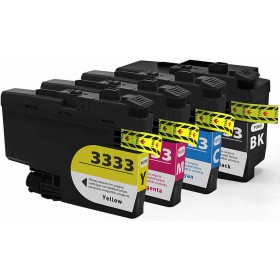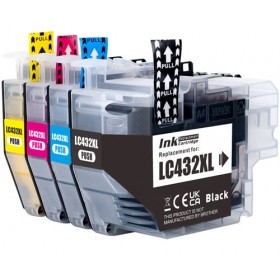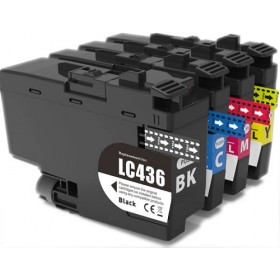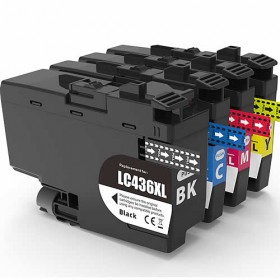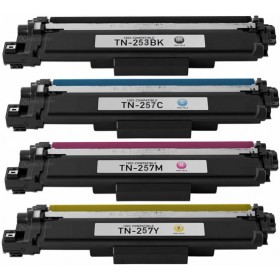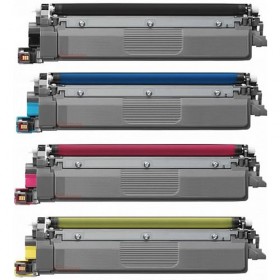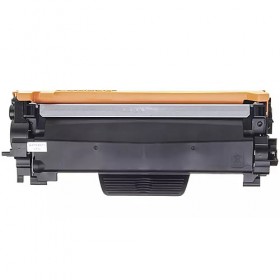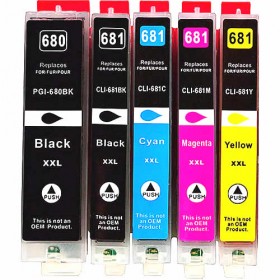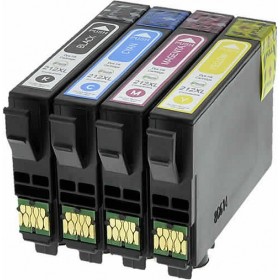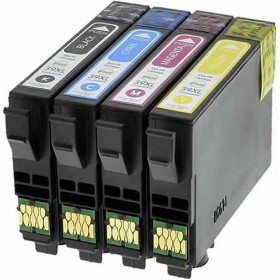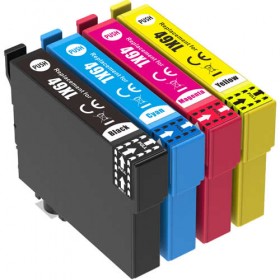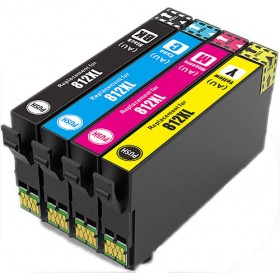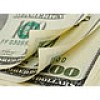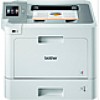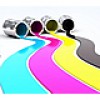Printer Cartridge specials
This is perhaps the most common question I get asked by people. They seem to think that their printer is unique and unable to work correctly with a non genuine consumable. This is NEVER the case, even if you have not been successful previously with third party cartridges that does not mean that it will never work with non brand name inks or toners.
In almost every case that I have come across there is a logical answer as to why the inks they have purchased have not worked. The most common issue is that the cartridges are using an outdated micro chip or else a micro chip from another region other than Oceania which is the correct region for all Australian made printer models.
The most common printers to be affected by the two scenarios above are HP and Epson. HP are relentless in releasing firmware updates which are often downloaded and installed without the user even knowing about it. It's become so severe that some of the recent HP models have had up to 13 updates issued and every time that one occurs it blocks any non genuine cartridges which are installed in the printer after the update is done.
This type of practice has become so fierce that now all of the new HP "e" series printers are locked to only being able to use genuine HP consumables. Yes that is correct, no matter what you do you will never be able to make a HP "e" series printer operate on anything other than a genuine OEM consumables.
These HP "e" series printer are the only exception that I know of that are not able to be used with generic cartridges, all other HP models are fine however we ALWAYS recommend that customers TURN OFF the auto updates to make sure that future updates do not get installed.
The honest answer is that there is no reason for the ridiculous price of ink. Genuine or OEM cartridges are formulated using a much more involved process which results in ink that is more UV resistant. Also OEM ink is oil based and generic ink is water based. This however certainly does not justify the outrageous cost of the genuine ink.
Most people know by now that the printer manufacturers do not make their money by selling the printers and that their aim is to recoup the money plus a heap more in the after sales of the inks. The genuine or OEM cartridges are certainly packaged nicer and in most cases they look flasher however that certainly doesn't justify the highly inflated price.
A high percentage of the OEM cartridges contain as little as 5ml of ink per colour. This in real terms works out to be a cost of around $10,000 AUD per litre, can you believe that? Generic or third party ink on the other hand usually works out at around $200-$300 AUD per litre. Quite a price difference. So I guess the answer is that there is no reason for the high price and it's expensive simply because people keep buying the genuine ink instead of the much cheaper and almost the same quality 3rd party inks.
This is a very common question and one that is often asked. Any printer which utilizes individual cartridges for each colour are always cheaper to run than those which use only the two. Although the printers which use only two inks are much cheaper to buy initially, long term they will cost you considerably more in ink costs.
Before making a purchase it is always clever to investigate the cost of the consumables as this is where the big expense can occur. All printers will work on generic inks and it is a myth to say that they won't. Unless you are planning on doing very high end photographic prints then using anything other than generic ink is pure madness.
In general Brother and Canon have some of the cheapest cartridges of them all ( generic ) however this is on a printer to printer basis and once again you should do your homework before actually buying a specific model. Brother Mono-laser printers also are incredibly cheap to run when using non genuine toners, they are also extremely reliable and long lasting.
In some cases sadly this is a cheaper alternative, can you believe that? Often you will see some of the HP and Canon printers on special for as little as $15 - $20. These units are selling for well below their cost price and we all know why. Yes you guessed it, the money will be more than recouped once they have sold even the very first set of inks.
These tactics have been going on for as long as I can remember and people are still getting sucked in by these bargain printers and not investigating ink prices before making the purchase. I personally know people who have purchased up to a dozen of these printers when on special and have simply dumped each one after the ink ran out. So I guess the answer to this question in some cases is YES.
When looking for ink it is best to start with your actual printer model and then check for the relevant cartridges. You can do a search on Google or else go to a reputable print consumables site and search by your model. Be warned however as many cartridges have similar model numbers and you must make sure that your actual printer is listed as compatible with the inks you are purchasing.
Often printers have more than one option for cartridges as some are standard yield and some are XL or even XXL which indicates they are high yield or in other words they contain more ink. Usually XL or XXL cartridges are better value as they often are not much more expensive than the standard cartridges and usually they contain at least double the amount of ink. This is mainly so with generic inks, genuine or OEM are often considerably more expensive in XL or XXL.
The answer to this is most definitely NO. The cartridges which come with your printer are known as "starters" and although they are physically the same size they contain a very small amount of ink or toner. Obviously the manufacturers are out to make money so the quicker the initial inks run out the better.
As previously stated manufacturers make their profits from the ink NOT from the sale of the printer. Typically a starter set of cartridges that come with an inkjet printer will print maybe 100 or so pages, with laser printers they are a bit more generous and often they are capable of printing up to 500 pages or more with the starter cartridges.
The following printers have the longest lasting ink cartridges and are also perhaps the cheapest printers to run if you are willing to use generic cartridges. In my opinion these printers are the winners by far:
- Brother MFC-J4340DW
- Brother MFC-J4440DW
- Brother MFC-J4540DW
- Brother MFC-J5855DW
- Brother MFC-J5955DW
Note: There are many other printers which also have similar page yields however the cartridges are more expensive and also many of them are not as reliable as the above printers. All of the above are inkjet printers, many of the laser printers are even cheaper to run than the above printers.
This is a very common question and there are several answers as to why this happens. The process which uses the most ink is when you clean the printhead nozzles. When a nozzle clean is performed, especially a deep clean then the printer goes into it's highest print resolution and it engages a part of the printer known as the purge pump.
The purge pump is vacuum sealed against the bottom of the printhead and it's job is to pull as much ink as it can through the printhead to try and flush out any partially dried ink which is in or on the surface of the printhead. This ink is then pumped out into a sponge waste-pad which is located under the printhead carriage. During the deep nozzle clean process a huge amount of ink is used and it is not uncommon for a full set of cartridges to become completely emptied after 4 or so deep cleans.
Some printers actually monitor the ink levels very accurately such as Canon and Brother printers however Epson printers utilize a microchip on each cartridge which does not measure the actual ink levels but runs on a page count system. So what happens with Epson printers is that they will print the allocated number of pages which is predetermined by the microchip and once the page count is reached it will read empty. This is why many people become annoyed when their Epson cartridges are deemed as empty because often they have considerable amounts of ink left in them.
If you asked me this question 15 years ago my answer probably would have been NO. Nowadays however I have no hesitation in recommending the use of compatible cartridges as the quality is very close to the brand name cartridges. In saying this there is still a heap of low grade generic printer cartridges on the market so it is always recommended that you check the company's reviews before making a purchase.
Often people assume that using an aftermarket printer cartridge could in some way damage or even destroy their printer. Let me put this myth to rest as I have been in the industry for 15 years and as long as you use a quality compatible ink or toner cartridge then there is no chance at all that your printer could be harmed. As with any product you purchase make sure that it comes with a proper guarantee and that the company you buy from is reputable. Do your homework first and it could save you a heap of headaches in the long run.

